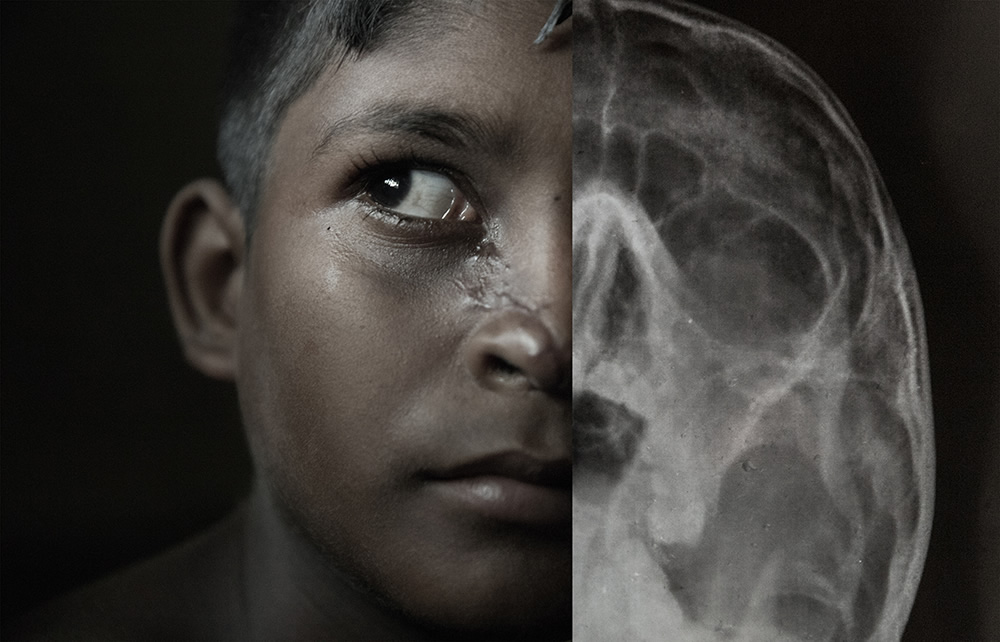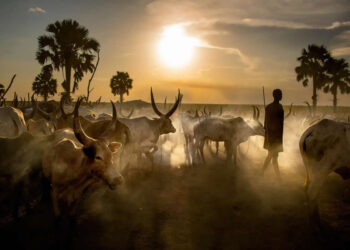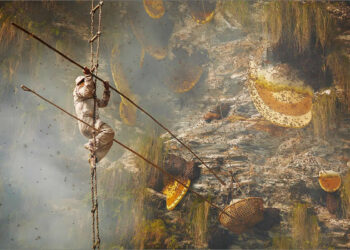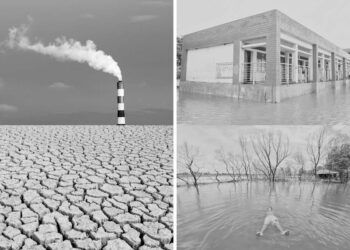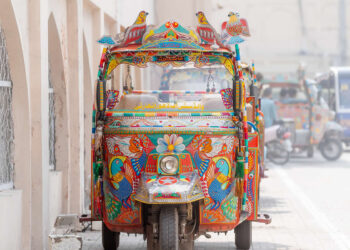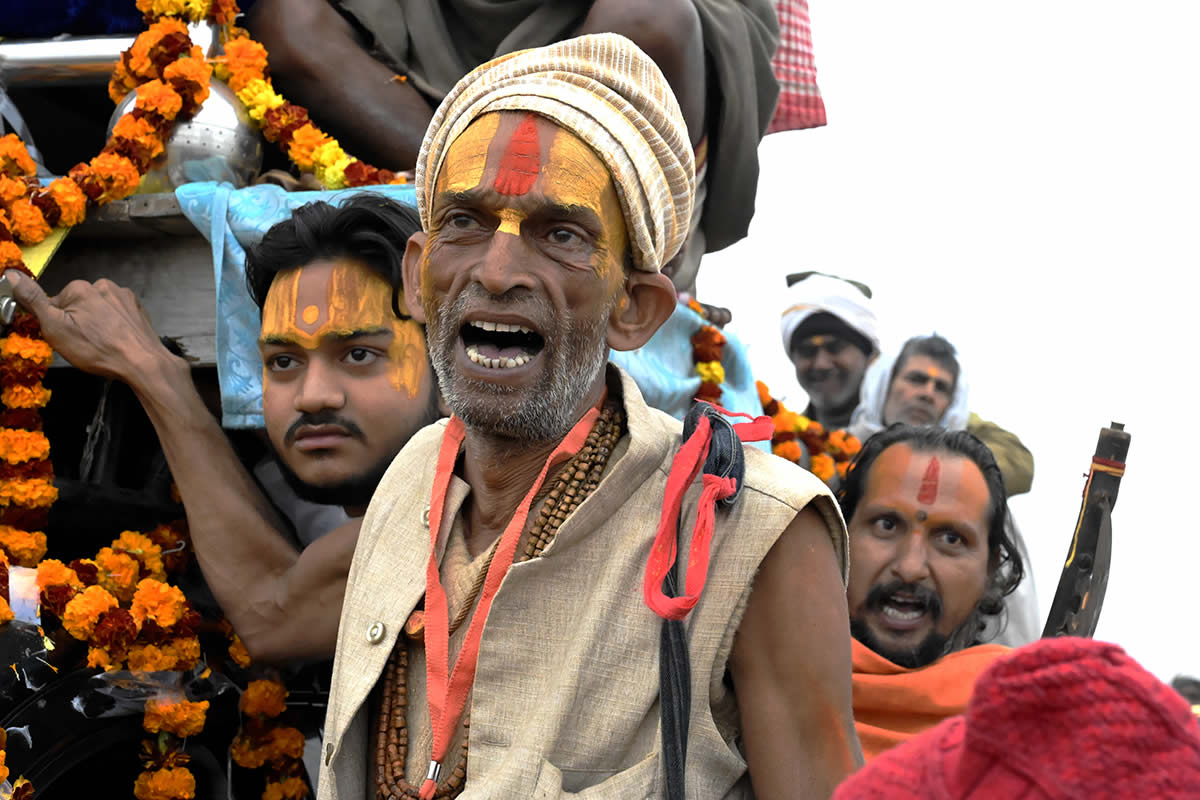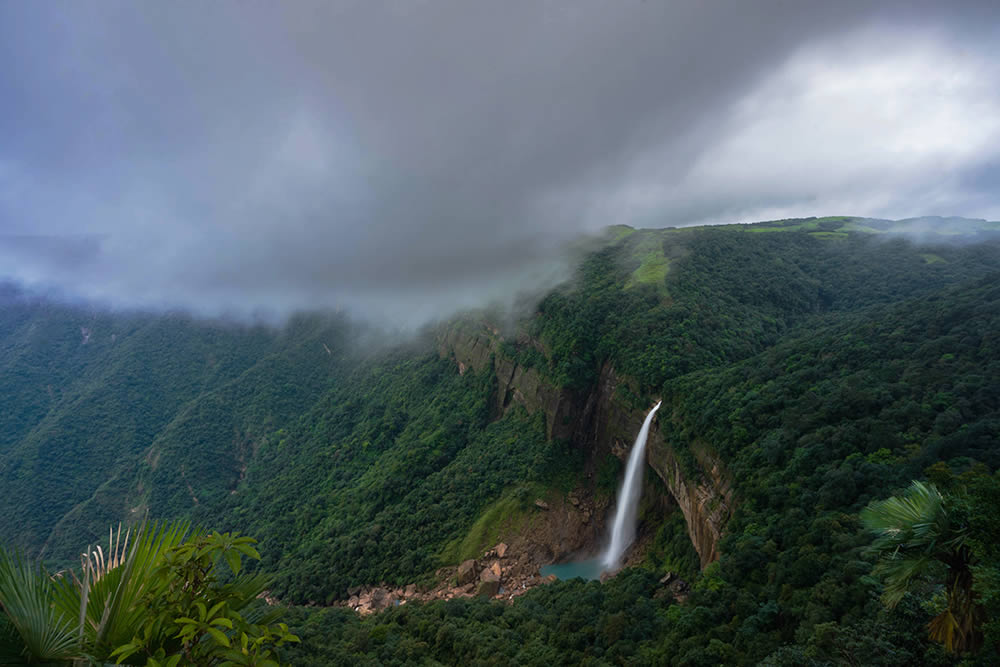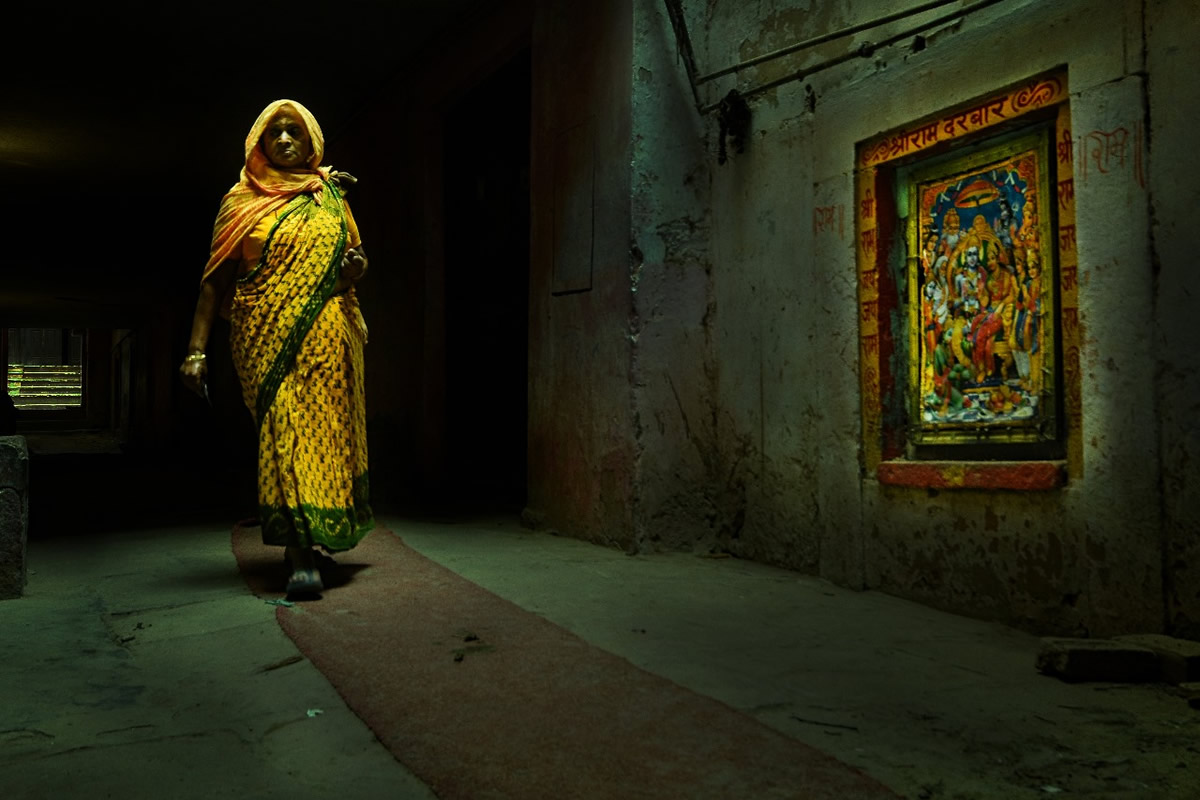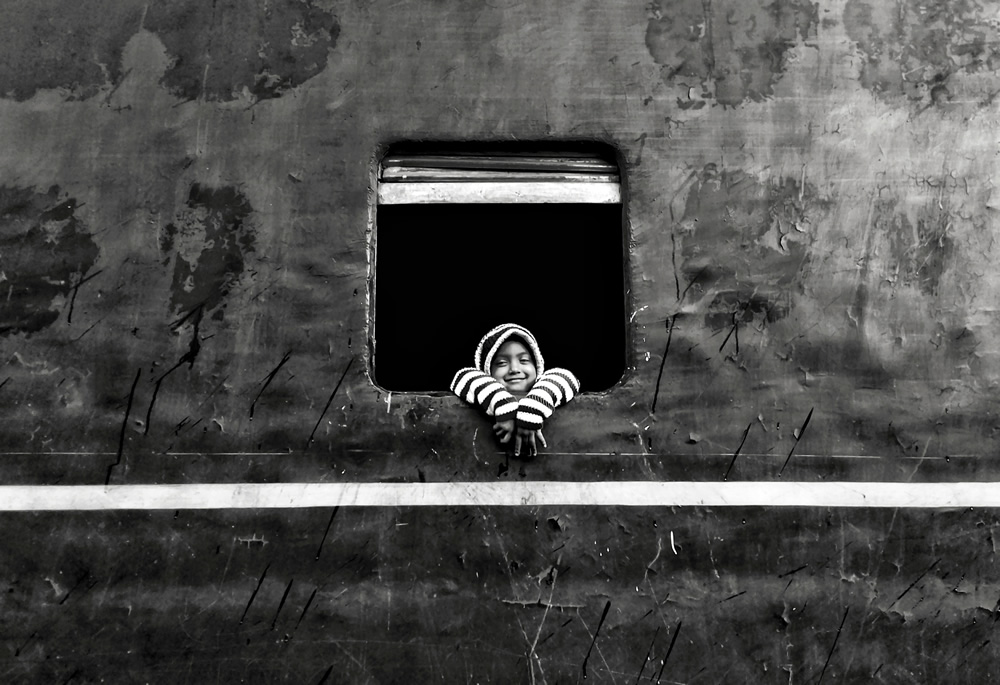A few days ago, cyclone Amphan swept over Bengal. Last year, cyclones ‘Fani’ and ‘Bulbul’ also hit West Bengal. Bengal has never seen such frequent cyclones in the history of the last few decades. Various parts of the country are in a state of devastation due to successive cyclones. Especially the people of coastal areas of West Bengal and Odisha. But what exactly is the reason behind this frequent cyclone? According to the researchers, the sudden increase in the cyclone is due to the increase in the temperature of the sea.
Cyclones are more likely to occur when the sea temperature is above 26 or 27 degrees Celsius. More than 80 cyclones form at sea each year. Most of them merge into the ocean and very few cyclones hit the land. Thus, it is understood that in the last few years, global warming has increased due to environmental pollution, water pollution, etc. And as a result, the temperature of the sea has increased tremendously resulting in an increase in the frequency of cyclones.
Cyclones are more likely to occur when the sea temperature is above 26 or 27 degree Celsius. Because of global warming, sea temperature is increasing day by day and this is causing frequent cyclones.
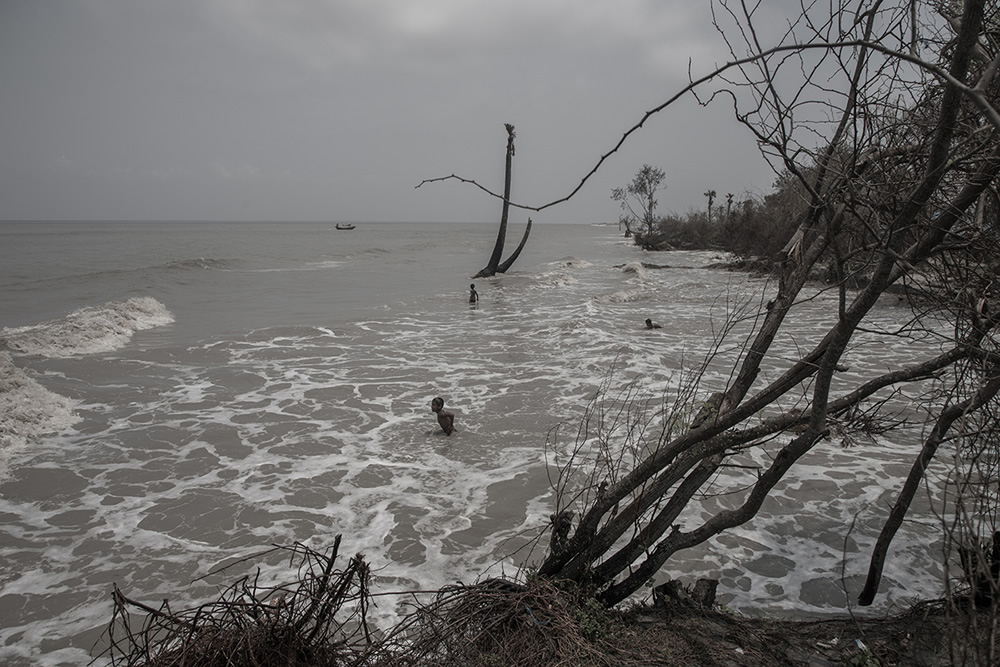
Due to the effects of repeated cyclones, dams have broken and a huge amount of water has entered the coastal villages and damaged the crops. The soil of the coastal region has become saline. Especially the people of Sundarbans have faced this loss. The soil in these areas is now uncultivable. Due to which the residents of Sundarbans area have lost their livelihood. At present fishing has become the main livelihood of these people. But at different times the condition of these areas is submerged so it is not possible to make a living. In addition, vast areas have been eroded into the riverbed. As a result, many have lost their houses.
As a result, the storm uprooted trees have destroyed many houses of coastal villages.
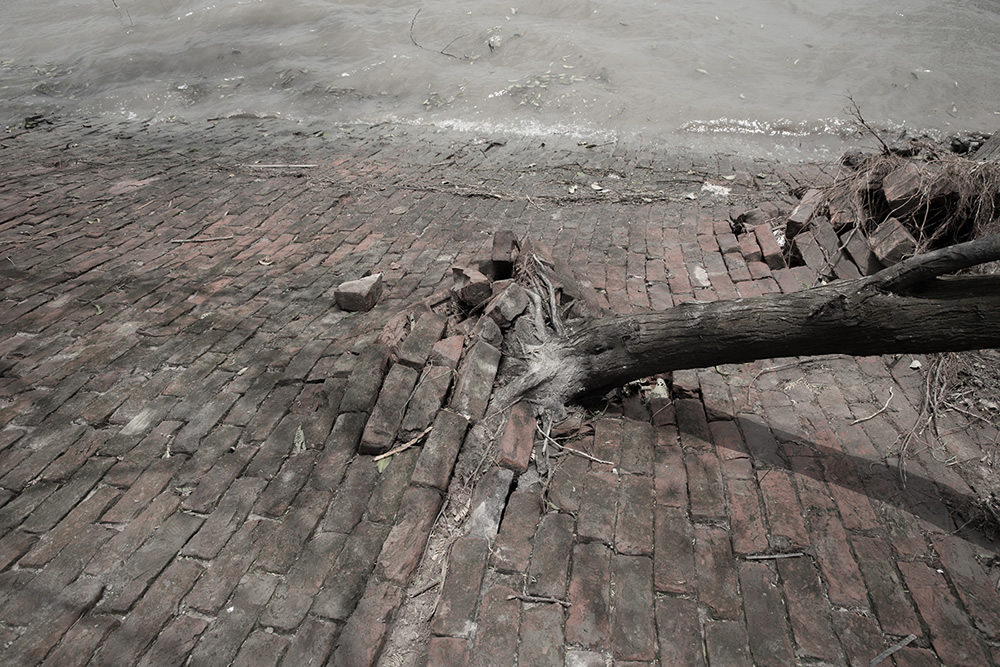
Now let’s talk about the worst cyclone of this century Amphan. On May 20, cyclone ‘Amphan’ hit the land. As a result, the two 24 parganas of West Bengal, Haldia, and other districts have been severely affected. The amount of damage is the highest in the last century. 116 people lost their lives in the storm and lots of people got injured due to the electric wire and broken asbestos. Thousands of people have lost their roofs. It is not uncommon for a tree to collapse in a severe storm or for a large tree to collapse. It is also part of the livelihood of some people to take those stalks and sell them. No, there is no ulterior motive in this work.
But what if this is exactly the case with any human? Surely you don’t understand, let’s be clear. Every time different families are left homeless due to different storms. And by exploiting their helpless condition, the cycle of trafficking in women goes to different ends. Girls are taken away from the family due to poverty, helplessness, or from a broken family, either out of greed for work or for some other reason. And then they are sold like the branches that fall from that big tree. The worst situation is in the Sundarbans.
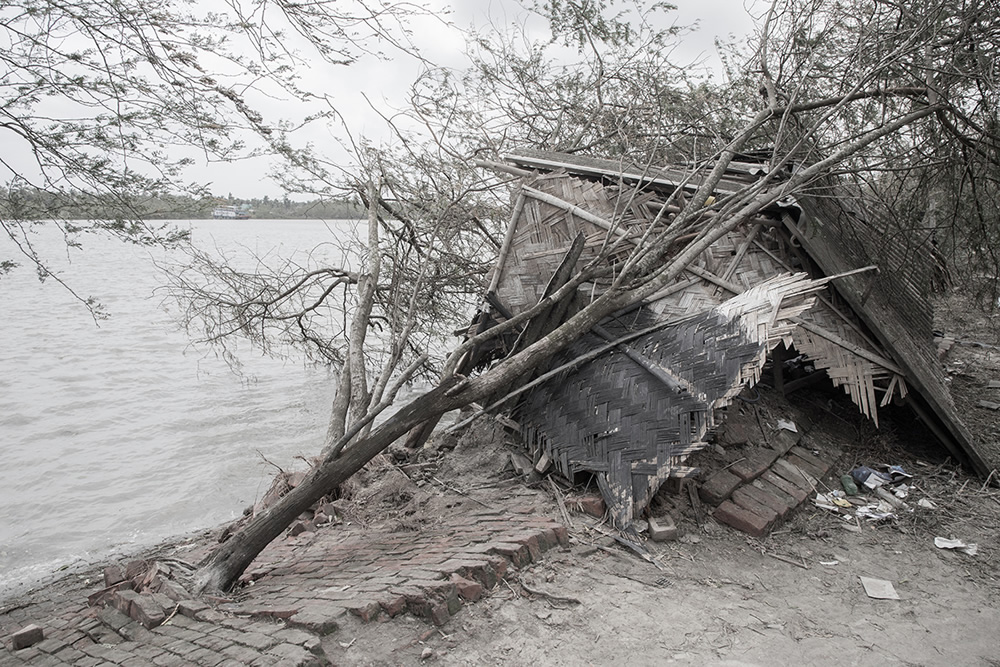
Due to the cyclone, the dam broke and several houses were washed away. People of coastal villages of West Bengal have already become jobless during the time of nationwide complete lockdown to mitigate the spread of the coronavirus. Due to the flood caused by the super cyclone, their farming land got destroyed. Besides human beings, many domestic animals have been swept away by the water. Villagers have also lost the sources of drinking water as the saltwater of the rivers broke the dams and entered the villages and mixed with the sweet waters of wells. It was seen that the cow was crossing the flooded farming land.
After several weeks also the villagers are living in the nearby schools as the local schools turned into cyclone centers by the administration. Long queues are observed outside of the food distribution camps made by some nongovernmental organizations as the villagers are not able to buy food items. After the cyclone, these people tried to recover a bit, but when the water of the river re-entered the flooded Kotal, these people had to suffer a new unbearable condition. But for how long? When will the dam be repaired again? When will public life in these areas return to normal? The residents of the Sundarbans, the largest mangrove region in the world, are now standing with that question.
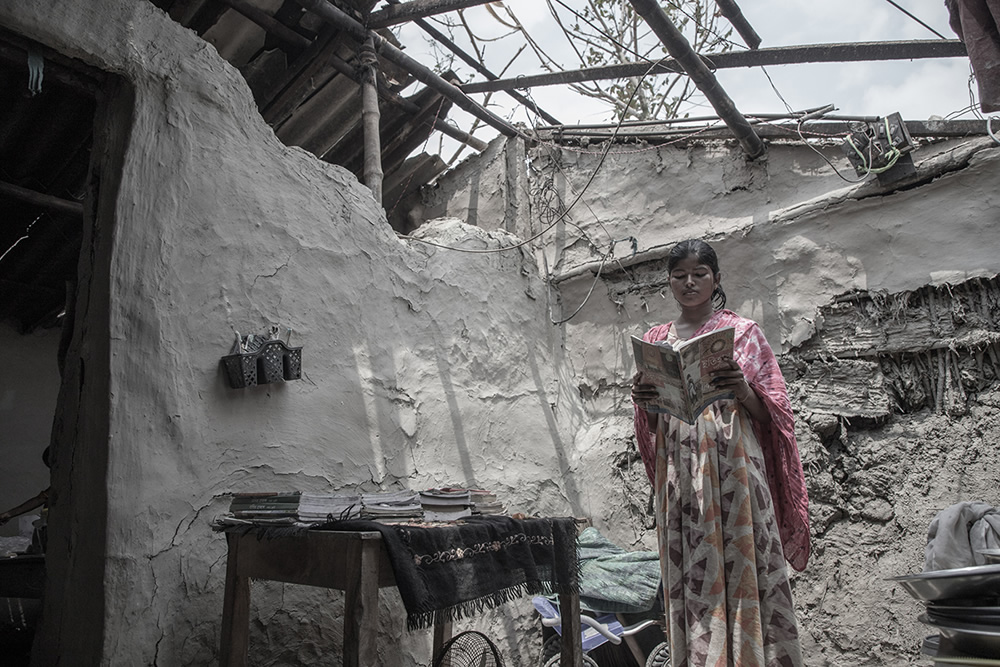
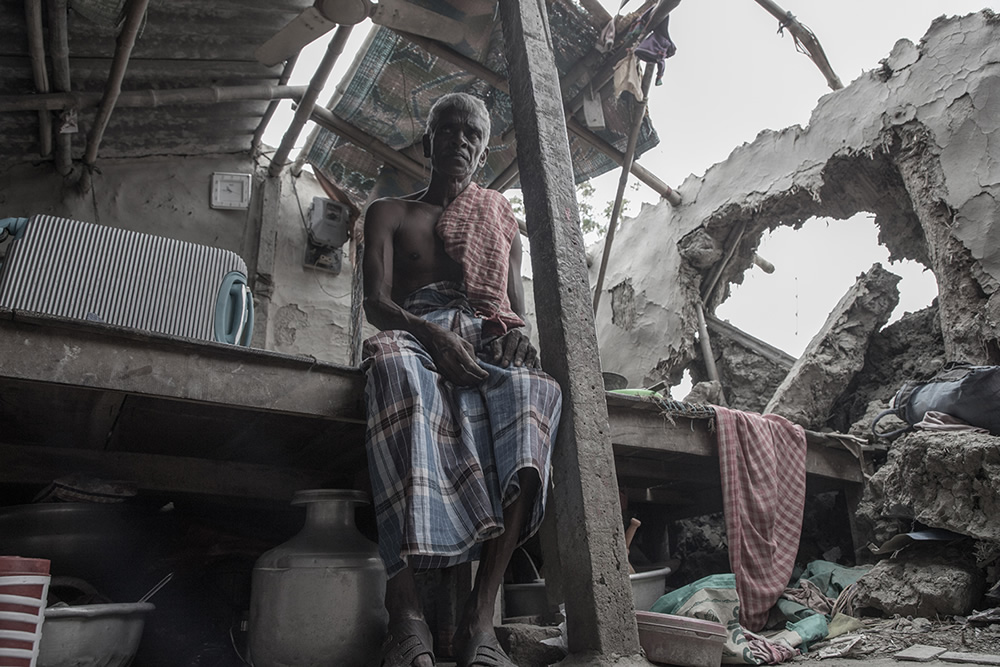
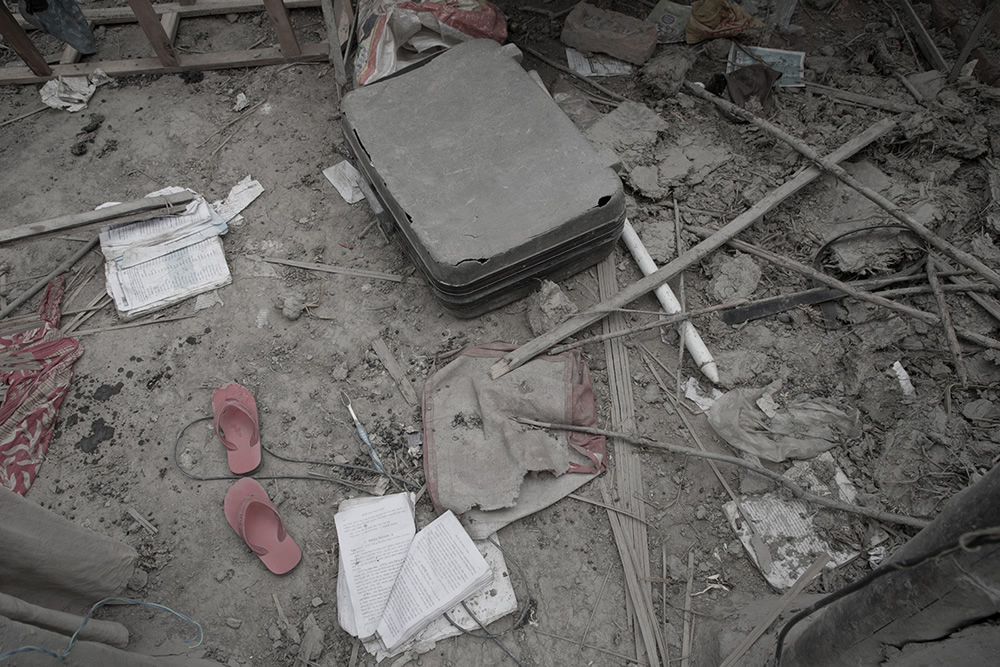
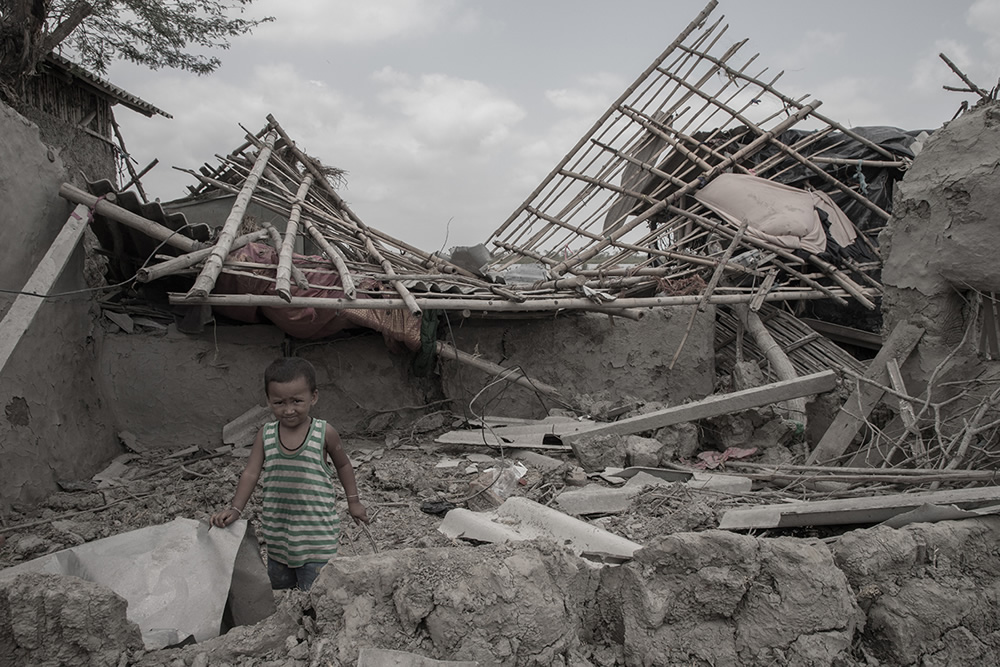
Eleven year old Farhan was fatally injured when asbestos flew during the super cyclone Amphan and fell on his nose. He got 6 stitches on his nose.
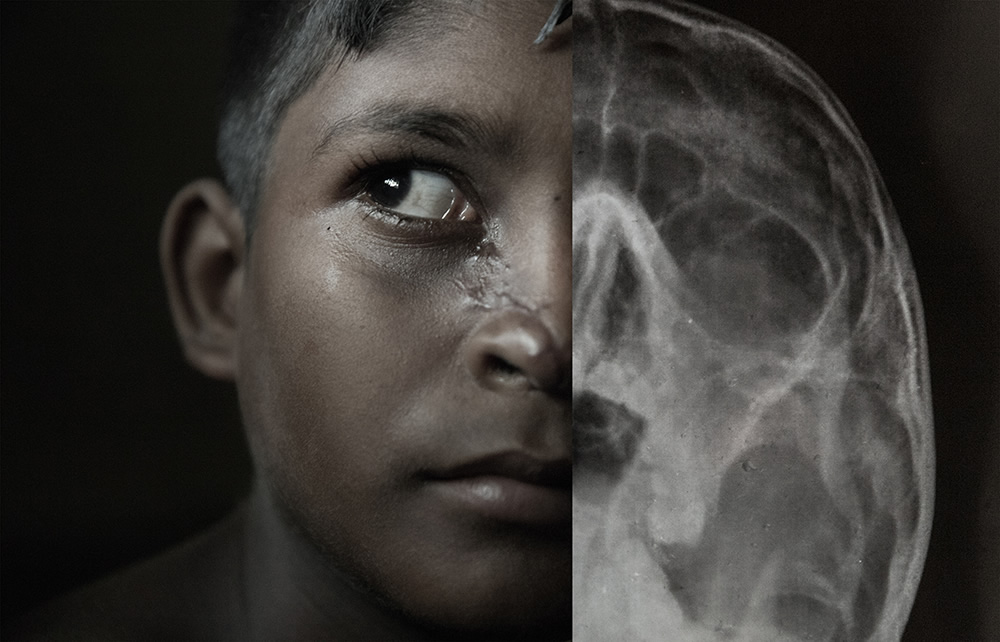
The villagers are returning home with rations in their hands, walking over the broken embankment of a flood-hit coastal village of West Bengal.
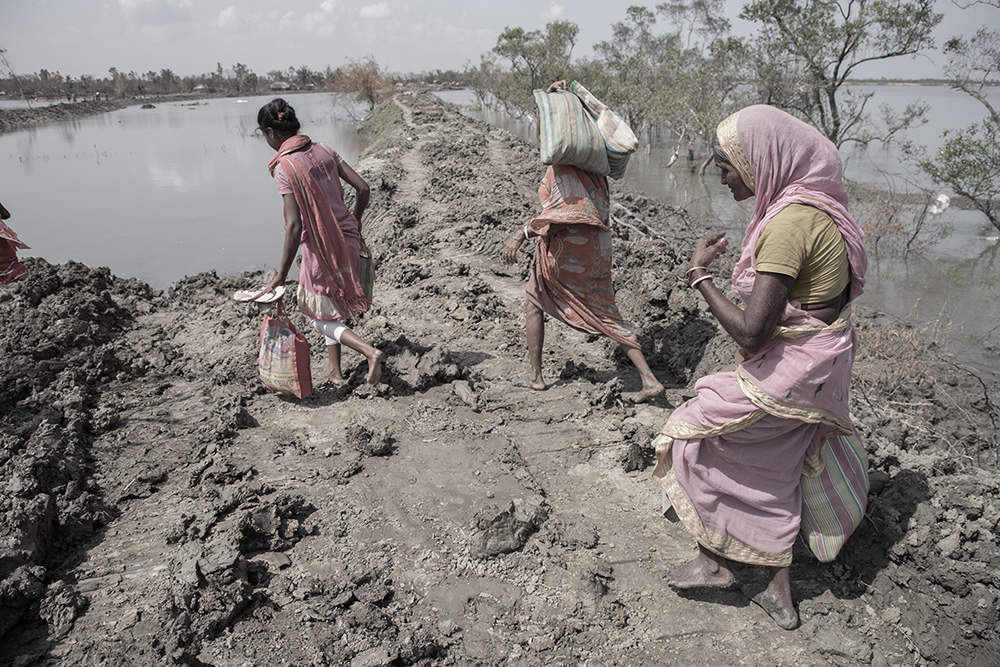
A cow is stuck in a flooded field and unable to return to the barn.
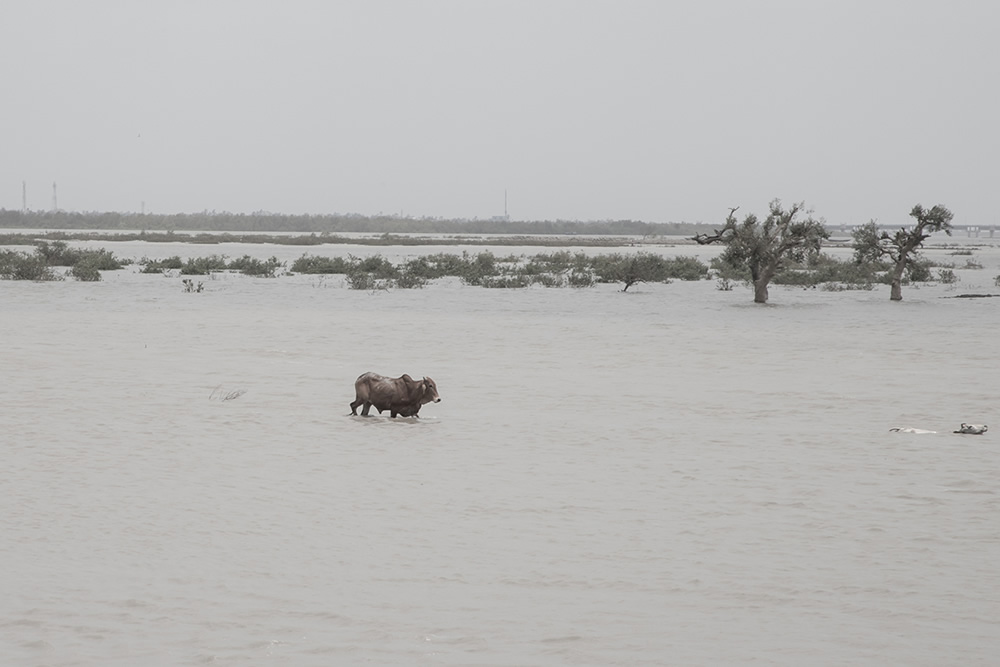
A goat, trapped in the flood waters, is being rescued by a boy.
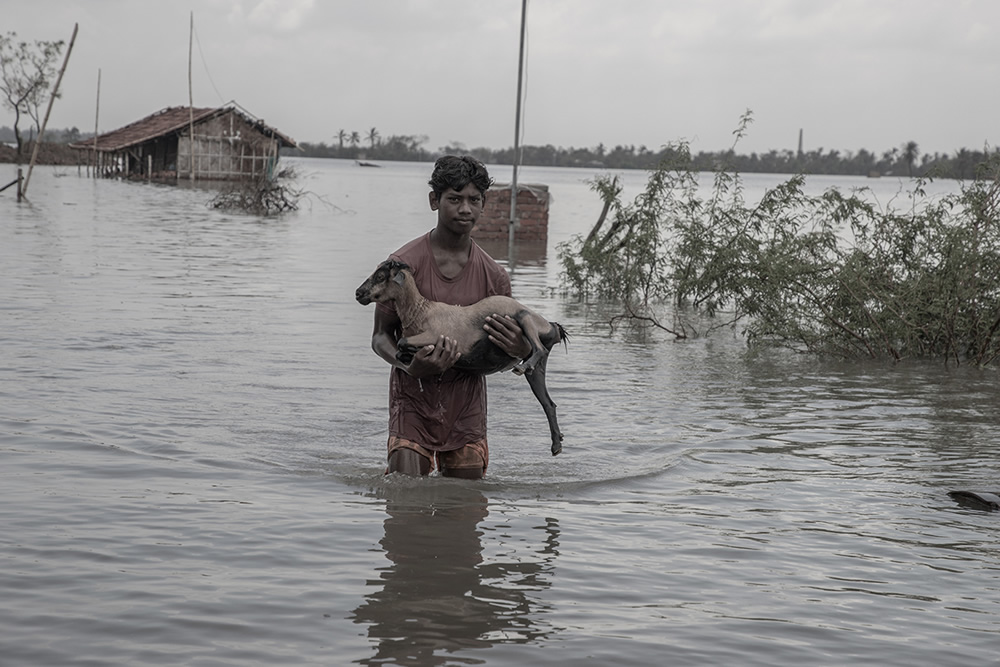
People of a flood-hit coastal village walking half-submerged in the floodwaters towards nearby school with their belongings as their houses are uninhabitable.
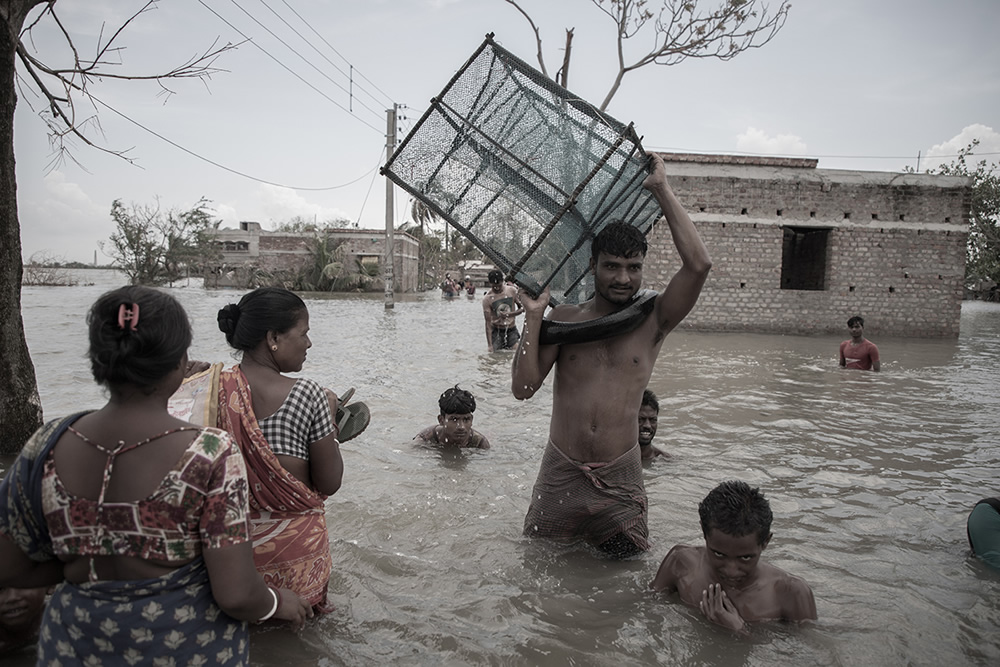
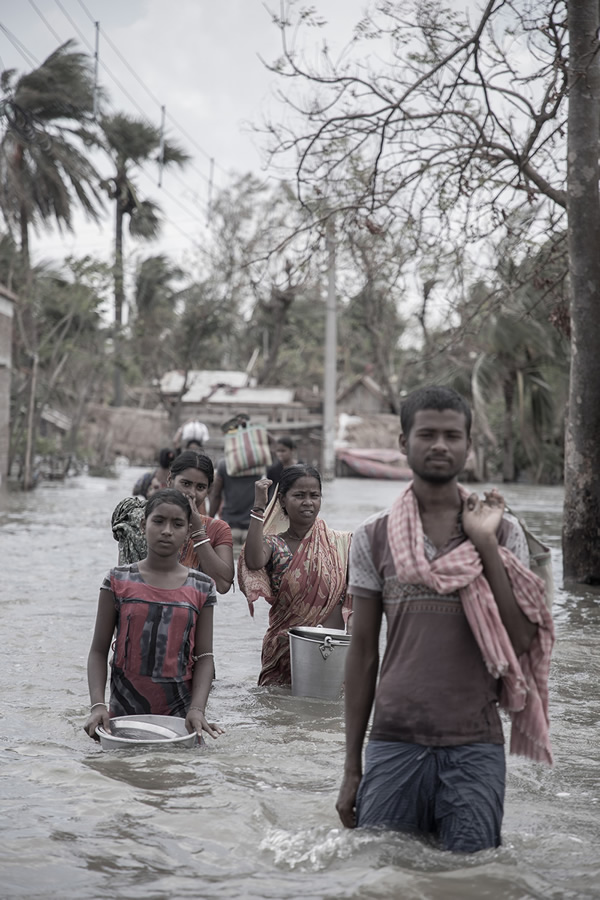
The villagers suffer from a drinking water crisis as the tube-wells of the village are submerged in the flood waters.
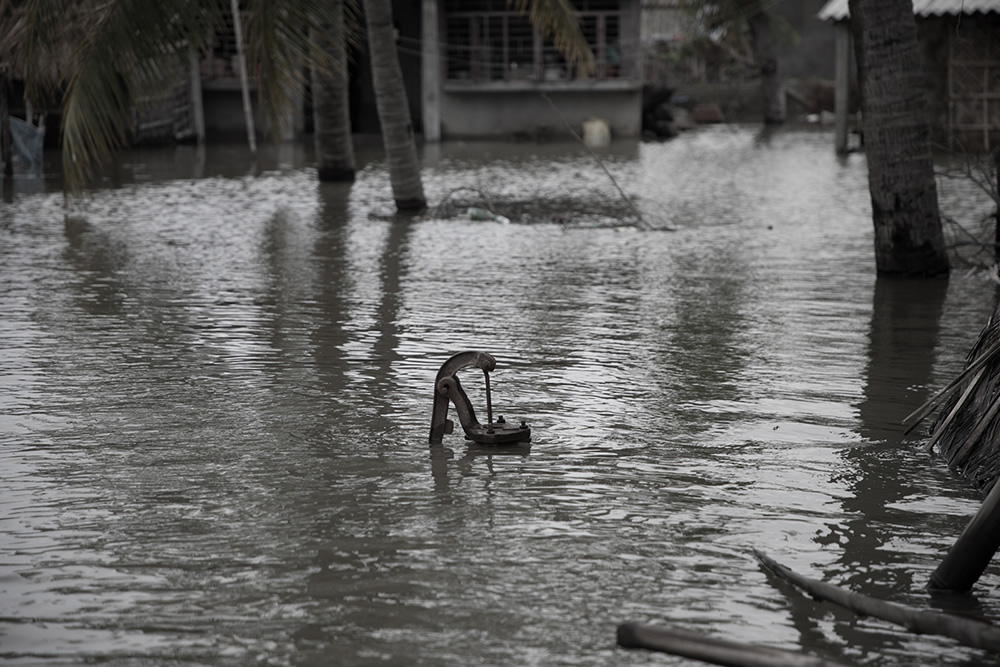
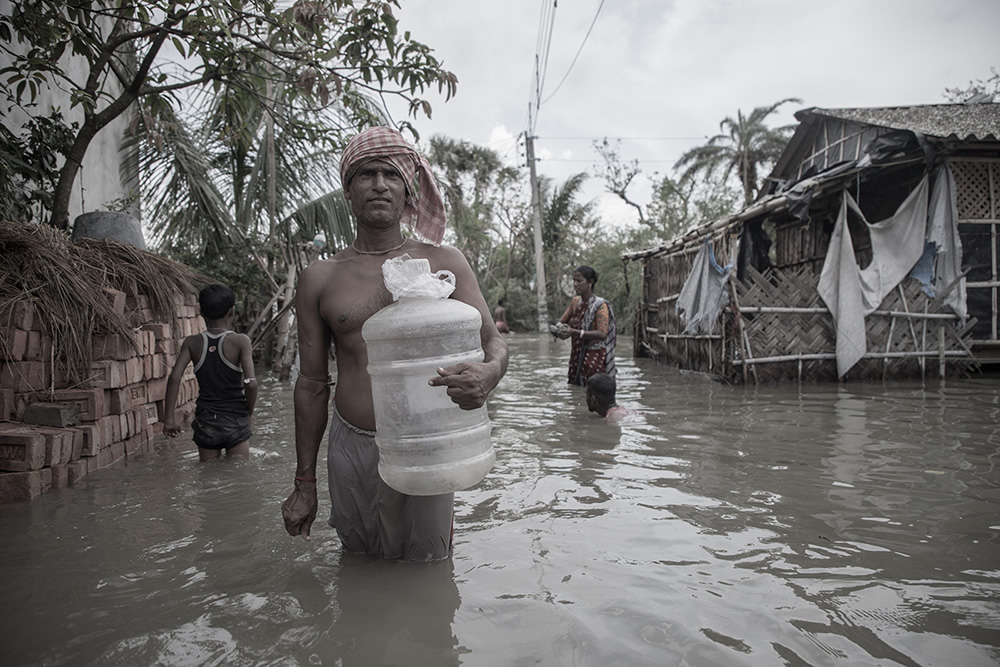

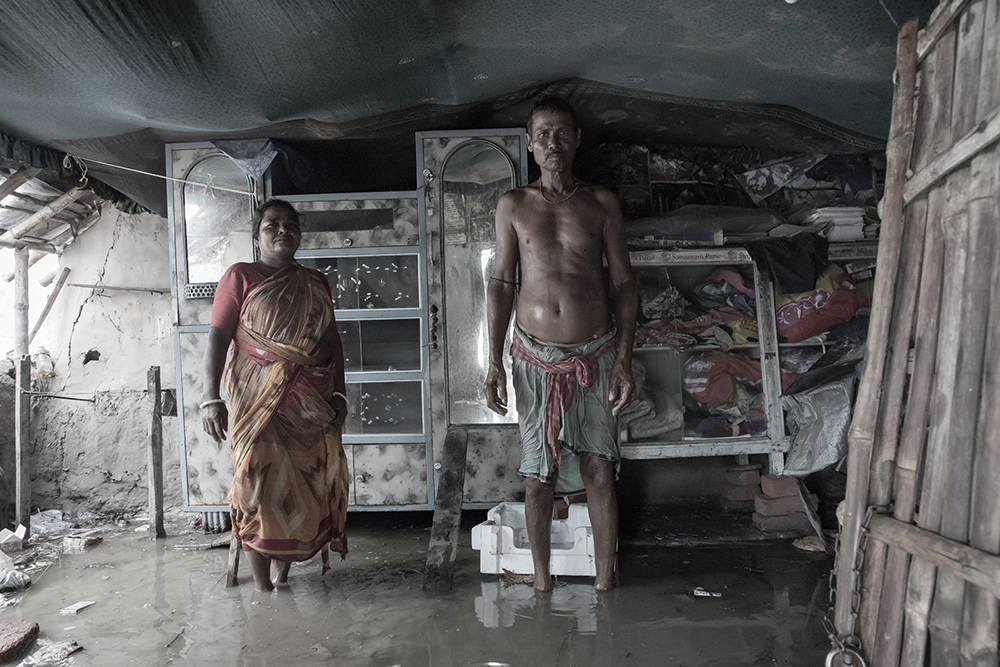
Israfil Sardar, a 12 years old boy, who lives in a flood-hit coastal village of West Bengal, got an infection in his left eye due to the contaminated flood water.
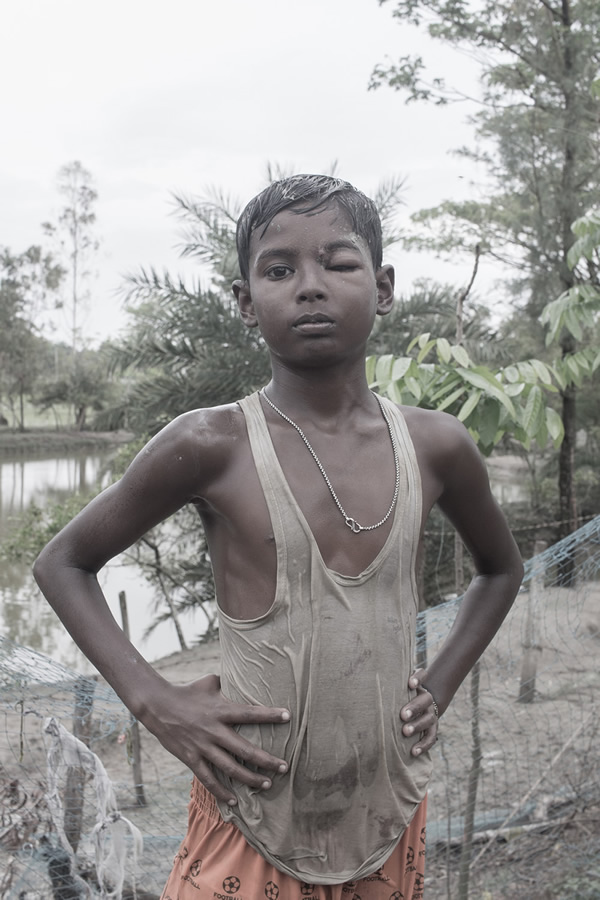
After each cyclone, the people of the village go through a severe economic crisis which has led to many cases of woman and child trafficking. (Image: Metaphor)
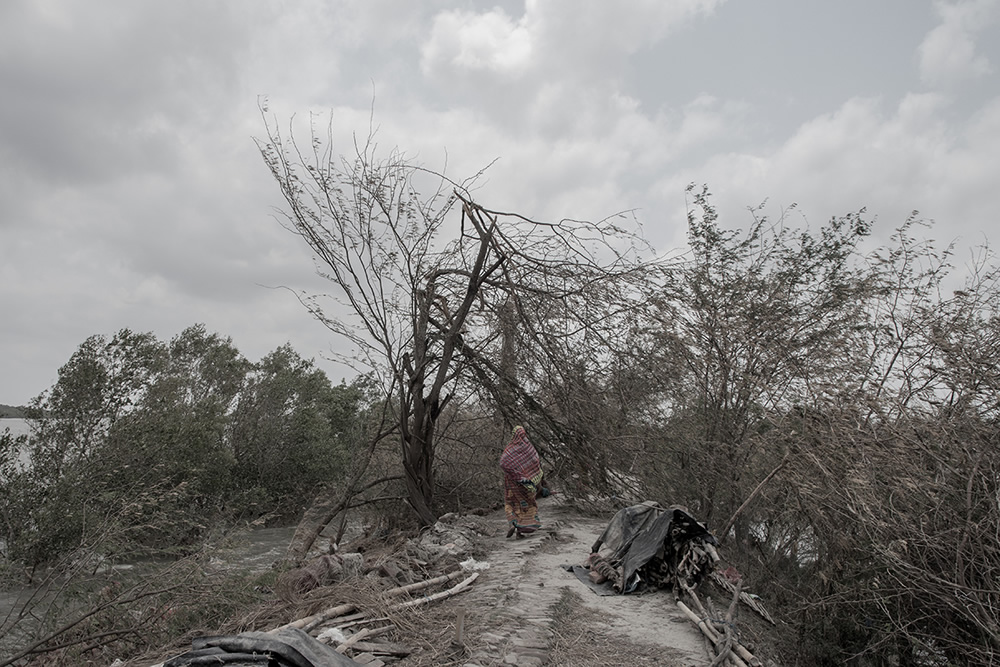
The cyclones break the embankment and the brackish water of the river enters the village and destroys the farming land and crops. As a result, the farmers suffer severe economic hardship.
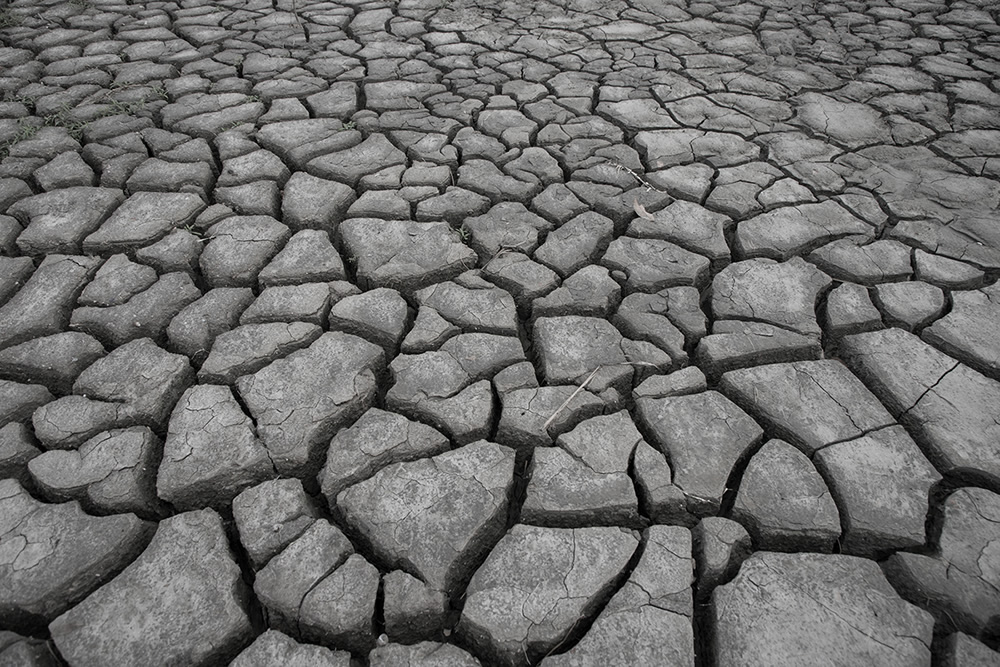
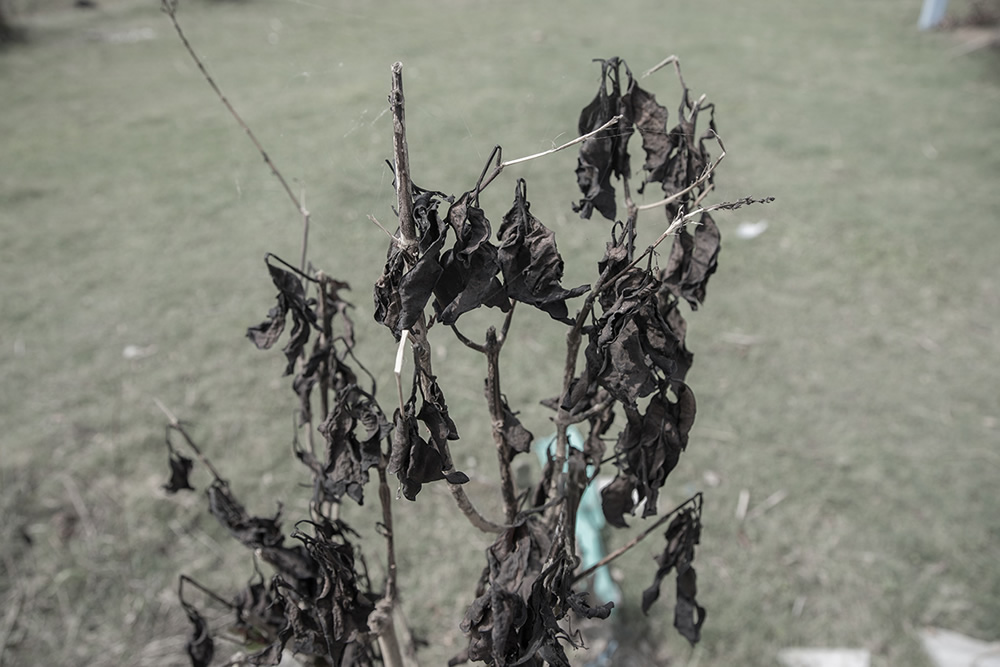
Villagers, who have lost their homes in the cyclone and flood, stays in nearby school with their belongings.
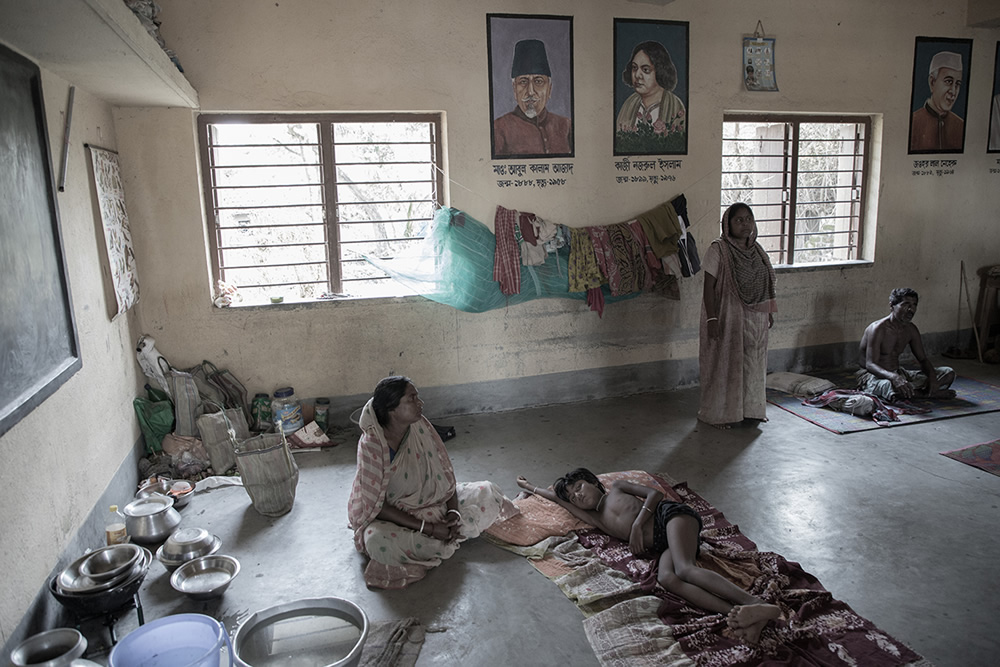
Picture of a flooded village painted on the wall of a school in a coastal village.
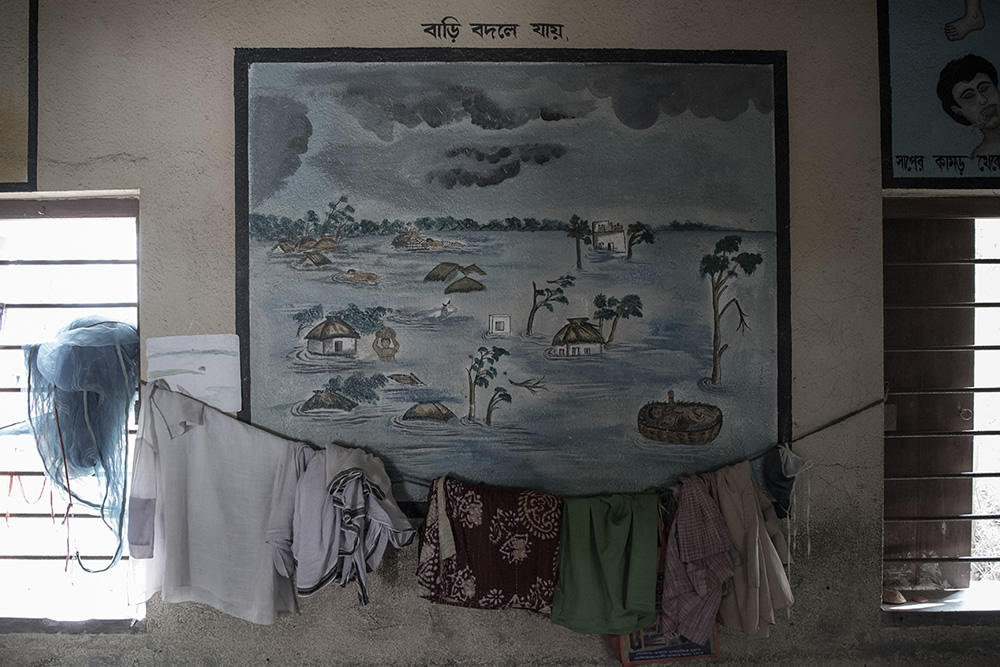
Sita Jana with her son Roopkumar Jana, who has down syndrome, are living in a nearby school after their house collapsed in the cyclone.
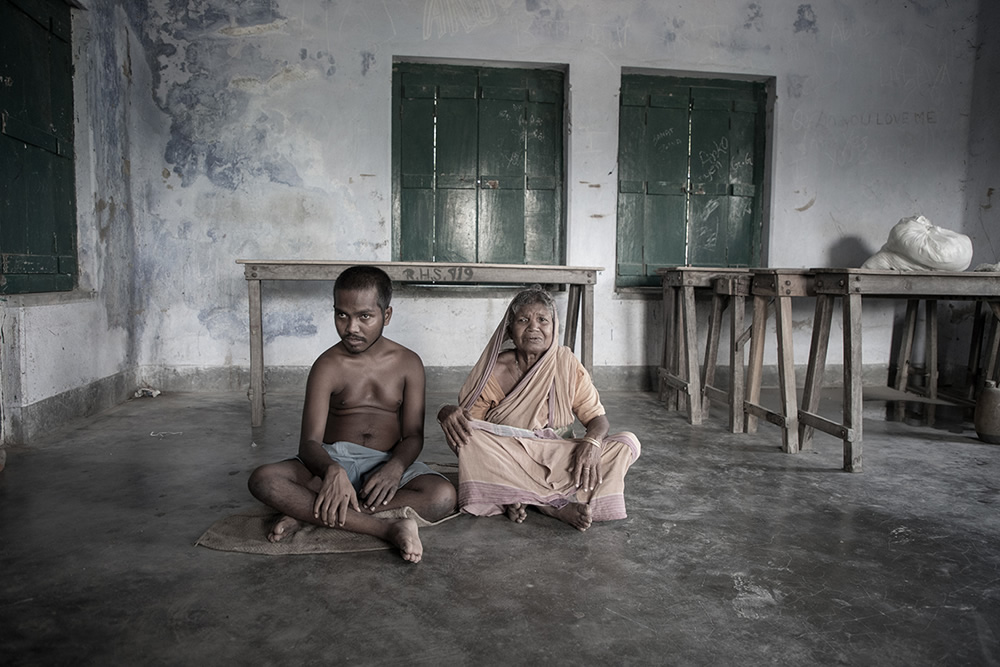
People of a flood-hit coastal village are standing in a queue outside of a food distribution camp.
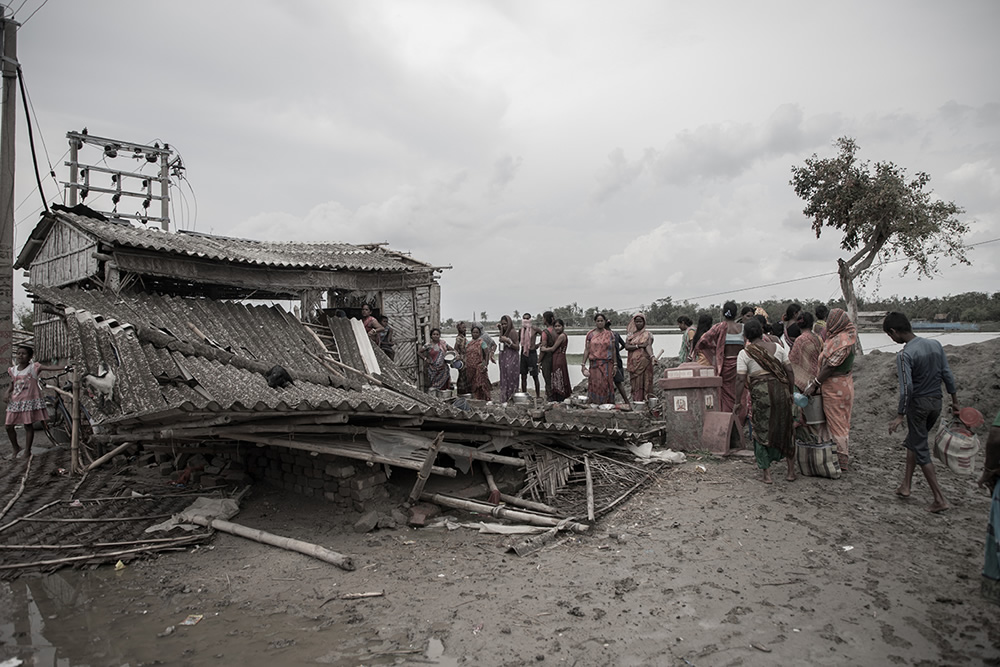
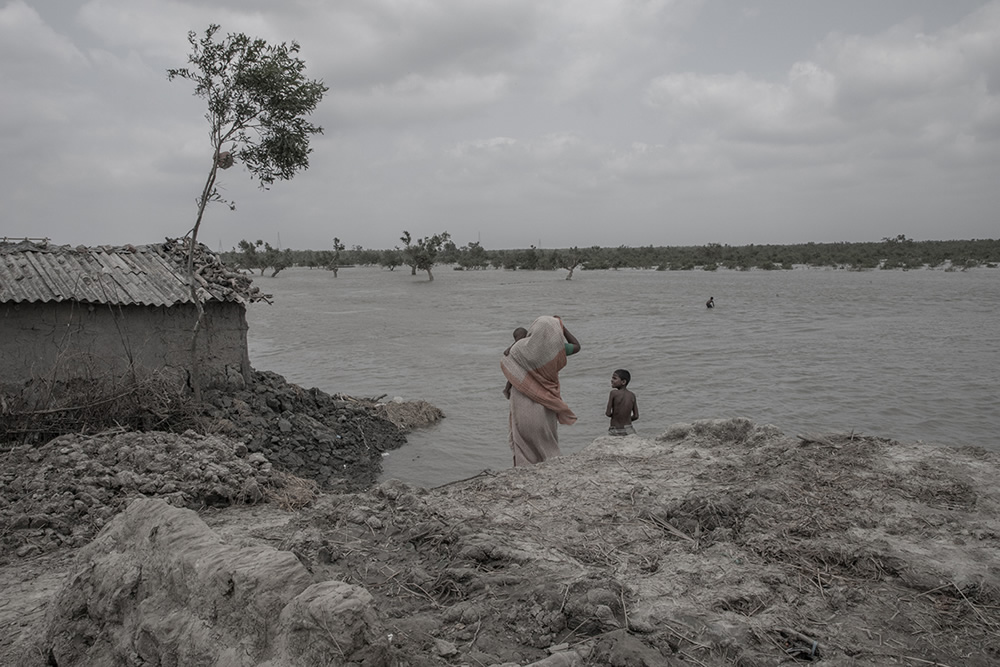
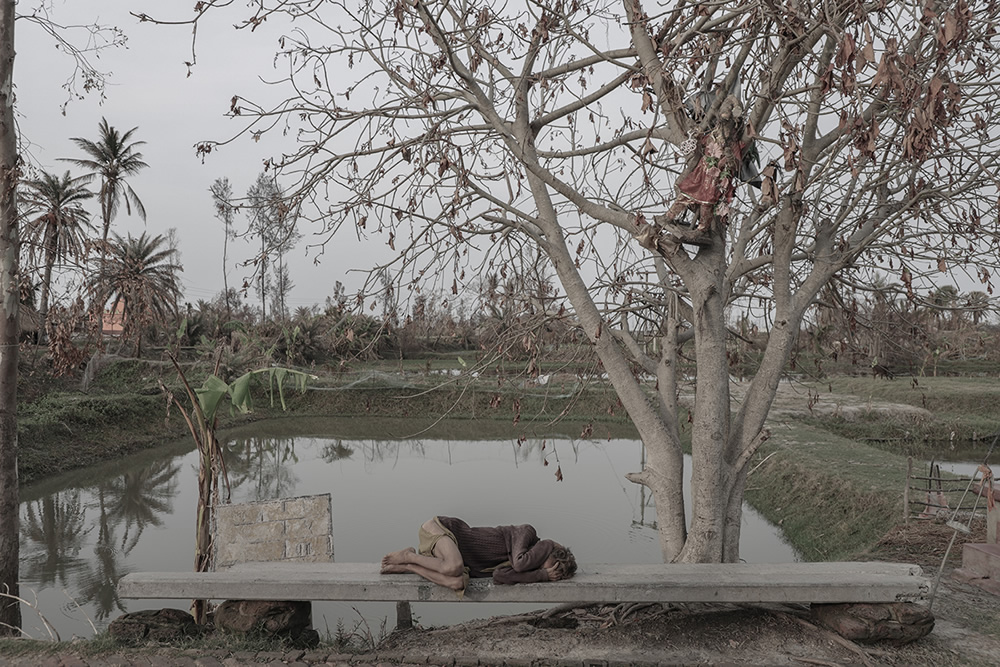
About Jit Chattopadhyay
Born and brought up in Kolkata, India. By profession, I am a Kolkata, India based independent photojournalist, currently working with News India Press(An Indian Portal) and Pacific Press Agency(A global photo agency). In addition to being a photojournalist, I am a documentary photographer. I love documenting things, which have some social impact. I have learned documentary photography from CSFK (A Kolkata based documentary photography institute) in a mentorship under leading documentary photographer Mr. Joydeep Mukherjee.
I have documented many socio-political and socio-economical crises and conflicts. Currently, I am working on the devastation in coastal West Bengal due to the frequent hit of several cyclones caused by climate-changing, which is related to global warming. I am also documenting a special school, serving children with a variety of Autism spectrum disorders and other cognitive and developmental disabilities. I have covered a lot of spot news events and my works got published by several leading global newspapers and news portals like BBC, The Guardian, MSN, India Today, CNN, Russia Today, etc.

You can find Jit Chattopadhyay on the Web :
Copyrights:
All the pictures in this post are copyrighted to Jit Chattopadhyay. Their reproduction, even in part, is forbidden without the explicit approval of the rightful owners.

